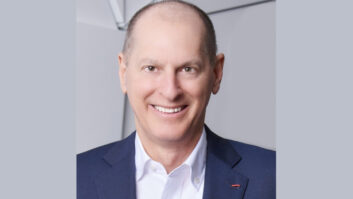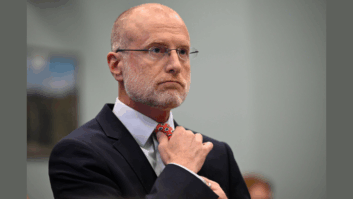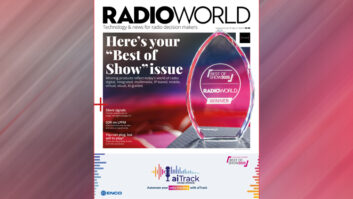Prepared remarks of Gary Shapiro, president/CEO of the Consumer Electronics Association, to the House Committee on Energy and Commerce Subcommittee on Communications and Technology, on “The Future of Audio,” June 6, 2012.
CEA is the preeminent trade association representing over 2000 U.S. consumer electronics companies. Every one of our members directly or indirectly has products or services relying on or conveying sound. At our industry’s annual trade show, the International CES, over 156,000 attendees admired more than 20,000 new products, including numerous innovations in audio.
We welcome this hearing as it is gratifying for Congress to focus on something we cherish but rarely discuss in Washington: the spoken word, music and sound. We appreciate this unprecedented opportunity to share some little known facts and views.
First, I’m proud to share that many of our members make loudspeakers and other audio products here in the United States and export worldwide. Audiophiles around the globe recognize and appreciate the phenomenal quality of these U.S. products including Altec Lansing, Atlantic Technology, Audioengine, Bose, Conrad-Johnson, Definitive Tech, Eminence,Harman International, HUMAN Speakers, Infinitiy, JBL, Klipsch, Koss Headphones, Legacy Audio, Leon Speakers, Inc., Martin Logan, McIntosh Laboratory Inc., Misco Loudspeakers, Mitek, Orb Audio, Polk Audio, Rayco Sound Industries, Inc., Rockford Fosgate, Specialty Technologies, Thiel Audio Products, Triad, Voxx International, Westone Laboratories, Wilson Audio Specialties and Z Box.
Other members, such as Microsoft, Apple and Livio Radio give listeners extraordinary and previously unimagined ways to enjoy music when and where they wish.
Still others, like Pandora, Google and Grooveshark open up a vast new universe of choices and content to music fans.
Indeed, Internet radio is booming. Recent research by TargetSpot found 42 percent of U.S. households with broadband Internet listen to Internet radio. Similarly, research from the NPD Group found 43 percent of the Internet population listened to digital radio broadcasts in 2011 – up from 29 percent in 2009. The Consumer Electronics Association recently found 39 percent of the Internet population listened to online streaming audio content in the last 12 months and 42 percent listed to MP3 files.
Second, our creativity and innovation is reflected by tens of thousands of independent musicians and by the big company members of the RIAA. The more I travel around the world the more I appreciate how we export our culture through the Internet, our movies and our music. The result is that so many in the world want to be like us and also learn or want to learn English. This is an American influence force multiplier and should not be taken for granted.
Indeed, the popularity of American culture and products abroad ties in directly in with innovation, including innovation in audio, both music and word, as our national brand. CEA believes our long term national strategy must be based on our strength in innovation. If we can continue to innovate, our economy will continue to grow and mitigate our tax and spending dilemma. Of course the challenge of innovation, including innovation in technology and music and news distribution, is that innovation always threatens incumbents and they too often come to Washington to protect their legacy business models.
Third, the world of reproduced audio is parallel to the world of energy in that we had only a few choices or sources in the 1960s: radio, the phonograph, the telephone and television. And as with energy, we have rapidly shifted to a growing set of choices with a phenomenal array of devices, products, sources and services. It’s not just music and news over tablets and telephones, its HD Radio providing choices and music over standard radio spectrum, its Sirius-XM satellite radio appreciated by over 22 million subscribers, its Pandora, and Spotify. It’s Gracenote cataloguing the world’s music and offering music based on emotion or by lyrics. It’s Livio Radio offering direct Internet access. It’s independent musicians raising literally millions of dollars on internet platforms like KickStarter. It’s the plethora of Internet choices including YouTube and sharing over Facebook. It’s the websites of artists and fan clubs. It’s audio books expanding rapidly in scope and service to children, the elderly and the disabled. It’s storage devices beginning with the Walkman which morphed several times into the groundbreaking iPod. It’s webcasts and podcasts and playlists.
Consumers who wish to get their audio news and entertainment in a variety of ways have an incredible amount of choices and the marketplace has responded with all its glory expanding quickly the diversity of business models, offerings and content created. Paralleling with video, we have entered a golden age of content creation and while some of the big distribution companies may see their markets shrink, entrepreneurs and new creators rapidly jump in and create new services, products and groundbreaking content.
And just like with energy, we suggest an “all of the above” policy, which means no one source should be given preferential treatment over all others. For this reason alone, we do not agree that Congress should take any action favoring broadcast radio over any other source of audio. Currently, Internet, satellite and cable broadcasters pay significant royalties to performers when their songs are broadcast. By contrast, over their air radio broadcasters are not required to pay performers. This situation is a creature of historical accident, and it is simply unjustifiable. Congress should ensure that over-the -air broadcasters do the right thing, and fairly compensate musicians.
Fourth, the phenomenal growth in digital video, the resulting flattening of TV screens and the high quality of the displays have created huge opportunities in and demand for quality audio. Americans buy over 30 million flat panel displays every year. To ensure the optimal viewing experience, consumers are increasingly looking for quality audio products to ensure that the sound matches the stunning HDTV pictures.
Fifth, recent advancements in the science of sound reproduction are changing the world of audio. In the early 1980s when we leapt from analog to digital and the compact disc and digital radio, some complained that music delivered with this new digital technology lacked “warmth”. We rarely hear those complaints today. Instead, we only see enhancements. Listeners can hear, in their own personal environment, audio that is identical to what was captured in the mixing room, the sound stage or concert hall. Surround sound provides a more immersive experience that makes one a participant more than a casual observer and communicates the emotion of the moment.
Dolby True HD is now part of a download music service. More the traditional packaged media business is being complemented by electronic delivery. Vudu, CinemaNow, HBOGo, Netflix, Apple TV and Amazon are streaming television and motion picture content to the home accompanied by multi-channel (up to 7.1) surround sound. Meanwhile, Americans are using a variety of devices to access their digital music. According to CEA market research, over the last year 70% of Americans listened to music on a desktop or laptop computer, and 60% on an MP3 player.
Sixth, although music is the only area where millions still spend hours enjoying creativity from hundreds of years ago, the fact is that our best times are still ahead of us. Social networking allows collaborative music creation and sharing. Imagine how our kids’ creativity will be unleashed as they learn music and collaborate with bands on line. Given the high correlation with music education and math development this is a good thing culturally and scientifically for innovation.
More, at the other side of the spectrum, with an aging population, audio solutions that provide amplification and sound clarity will emerge through devices such as phones and headsets. In fact, CEA has initiated a standards project to enable people with hearing impairments to adjust audio presentation for their specific needs. We will rely in audio delivered electronically for health maintenance, socialization and service to remote, aging and other populations at need.
The tremendous recent growth in interest in high quality headphones likely presages further business opportunities for higher quality content, media and delivery methods. This headphone-driven interest in high-quality audio may help give legitimate content providers a critical marketplace edge over low-quality, unauthorized internet downloads. More, the growth in surround sound also is being followed by surround streaming. Companies like Olive, Sonos, Sooloos, Sonore and others are manufacturing servers that include surround sound music playback.
Finally, if there is one area of concern it is what we can do collectively, to educate Americans about the importance of protecting their hearing. Many in my generation attended – and may still attend – concerts where their passion for the music put them too close to loud speakers. We also know that playing music too loud can affect hearing and for this reason since 1981 most reputable headphone makers have added warnings with their headphones about playing music too loud. And CEA has joined with the RIAA, the American Speech-Language-Hearing Association (ASHA) and others in a national campaign aimed at ensuring children and parents learn early to value hearing as a precious sense that must be protected. We don’t seek Congressional action other than the “bully pulpit” that concerned public officials can utilize on this important issue.
Clearly, the audio marketplace for music and information is incredibly vibrant. Remarkable innovations are entering the market at a rapid pace, and thriving new business models are being created. The winners are US consumers, who have unparelled access to news and information from a multiplicity of sources. With all of these advances in audio distribution and consumption, I am sad to report that we are still fighting efforts to mandate the incorporation of old technologies in new products – namely, radio broadcasters’ demands that Congress forcibly intervene in the marketplace and require analog radio receivers be installed in a host of digital devices.
The fact is that at least two dozen phones equipped with FM tuners are already on the marketplace for consumers who desire that feature, although surveys indicate that it is not widely used.
Faced with the fact that analog radio in digital phones is not popular with consumers, broadcasters are trying a new argument. They now claim that FM tuners are somehow necessary so that Americans can be alerted in the event of a tornado. This argument defies logic for a number of reasons.
The vast majority of radio stations operate in unattended mode, meaning without people present to manually control the programming. Some stations do have people present during specific periods of time, such as morning drive time, but operate unattended during other periods. When it comes to informing their audiences about time sensitive information unattended stations typically either don’t do it at all, or are very slow to get the information out. This is because to operate in unattended mode the programming has to be planned out and recorded well in advance.
This unattended operation is a natural result of technological progress. Many other industries have also embraced unattended operation, such as banks, which have for years allowed us to get money from ATM machines when there is nobody present at the bank. Also, gas stations allow us to fill up our tanks without attendants present.
Unattended operation is great for consumers because it provides all of us with easy access to services whenever we need them. However, if we need urgent, timely service in a crisis an unattended business is usually not much help. If your car breaks down in the middle of the night it will be easy to find working gas pumps at an unattended gas station, but very hard to find a mechanic. And if there is a local emergency in your community it will be easy to find pre-recorded programming on unattended radio stations, but hard to find up-to-date information about the crisis.
Also, in the event of an emergency, people increasing use their mobile phones to access the Internet or platforms such as Facebook and Twitter. The services provide specific and localized information that is often more helpful than a generalized radio update.
Finally, and most important, wireless carriers and the federal government are already rolling out a system to provide geographically targeted emergency alerts. The Wireless Emergency Alert (WEA) system, deployed this past April, will transmit emergency alerts for severe weather, as well as AMBER alerts for missing children and Presidential Alerts for national emergencies. The text based messages are vastly more effective than FM transmissions because they will instantly be displayed on the phone. A warning sent by analog radio is useless unless you happen to be listening to the radio at the exact moment the radio is transmitted.
CEA opposes not only a mandate for FM chips in cell phones, but also opposes the broadcasters’ current effort to require a government study of this issue. The marketplace has shown that Americans are perfectly capable of deciding for themselves what functions and features they want in their smart phones. Wasting taxpayer funds for something as absurd an unnecessary mandate on innovation is the kind of special interest-driven expenditure that frustrates average Americans.
Clearly, broadcasters have lost their historic monopoly on music transmission, and now exist in a more competitive environment. Indeed, research TargetSpot research found nearly half of those surveyed (47 percent) spend less time listening to broadcast radio than they did a year ago. Not surprisingly, the steepest decline in broadcast radio listenership was among “digital natives” – young adults age 18 to 24.
The correct answer for broadcasters, however, is not to beg Congress to protect their historic business model. Instead, broadcasters must do what other industries do when faced with new market entrants – learn to compete smarter and harder.
Indeed, if the broadcasters wish to compete effectively, redoubling their commitment to HD Radio would be a good first step. Delivered over the AM/FM analog spectrum, HD Radio allows over-the-air broadcasters to offer the same digital sound quality and wide array of programming now offered by their digital competitors.
We applaud Ranking Member Eshoo and Congressman Issa for introducing House Continuing Resolution 42 , the “Creativity and Innovation” declaring, among others, that new Government mandate forcing mobile device manufacturers and wireless carriers to include terrestrial broadcast radio tuners in new mobile devices will stifle innovation, competition, and consumer choice. We hope other members of this subcommittee will join in support of the resolution.
Rather than imposing mandates that would restrict choice and impose costs on consumers, Congress should act to make sure that the vital music marketplace continues to thrive.
Today, a growing amount of music is enjoyed on spectrum-dependent mobile technologies. We applaud Congress’ efforts to promote the voluntary auctions of underused television broadcast spectrum, and we call on you to ensure that these auctions take place as expeditiously as possible. The result will be more investments, more startups, and more high-skill, high-wage jobs.
Similarly, as an intellectual property (IP) industry, we call on Congress to promote smart IP policies that protect creators while maintaining the dynamism of the Internet economy. While we had disagreed with some in the content industry over the approach taken in the Stop Online Piracy Act (SOPA), we continue to believe that we can reach a consensus on strategic and targeted ways to cut off funding to overseas “rogue” web sites. We also encourage content owners to aggressively offer licenses to legitimate music services that will compete effectively with unauthorized purveyors
Finally, to compete effectively, American audio companies need access to the best, brightest and most innovative workers in the world. We urge Congress to enact strategic immigration reform, removing barriers to highly-skilled workers and entrepreneurs, and ensure that immigrants receiving advanced degrees in US universities can stay in America to create jobs.
Innovation is driving our economy, and nowhere is this truer than the audio industry. Hardware manufacturers, online innovators, and artists are all taking advantage of extraordinary new business opportunities. As always during times of disruptive innovation, incumbent industries come to Congress and request special protections. We urge Congress to ignore these self-interested pleas, and continue to promote a vibrant and dynamic free-market economy that creates investment and jobs. We look forward to working with you in those efforts.







